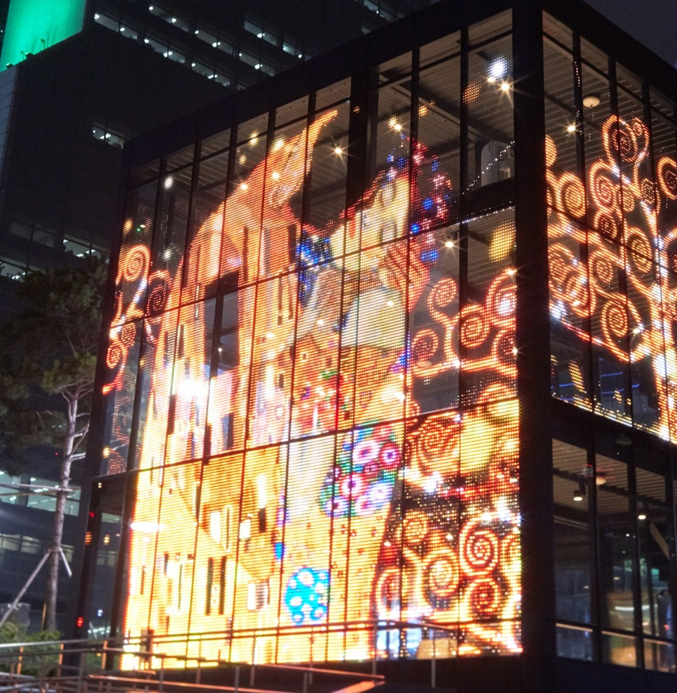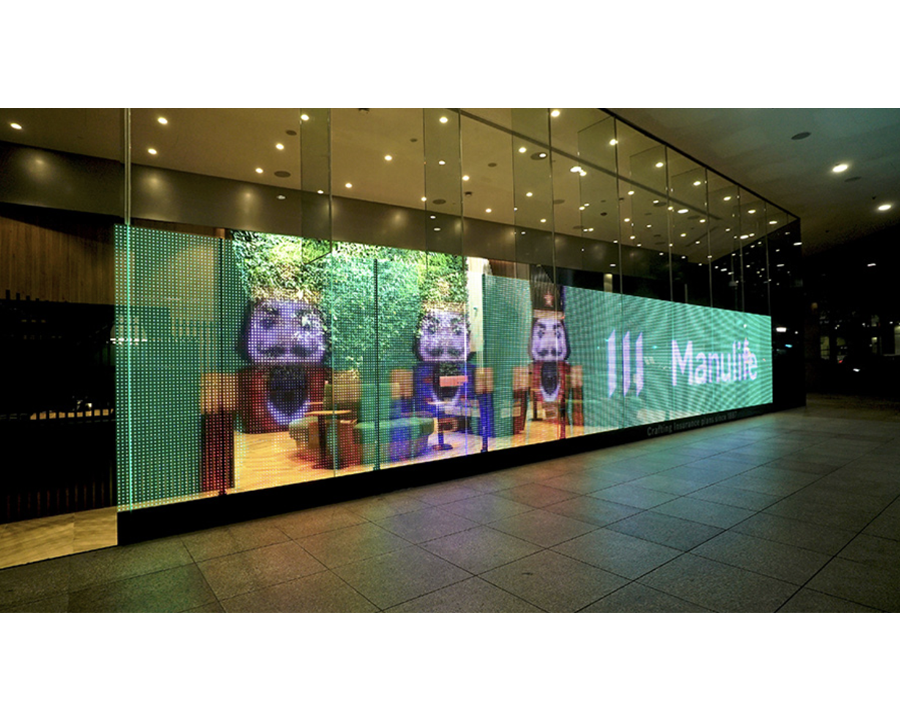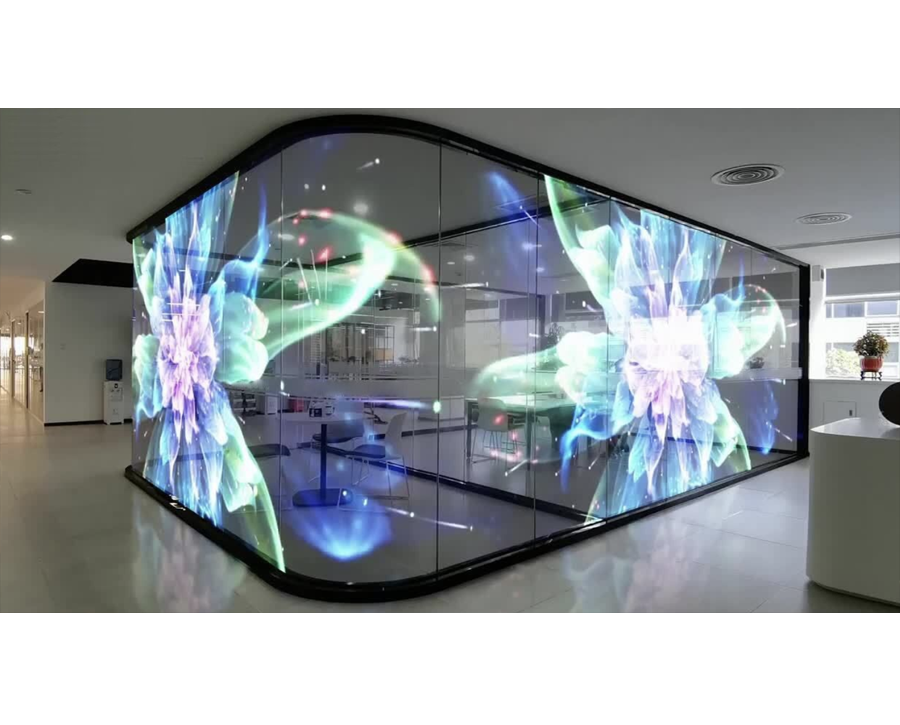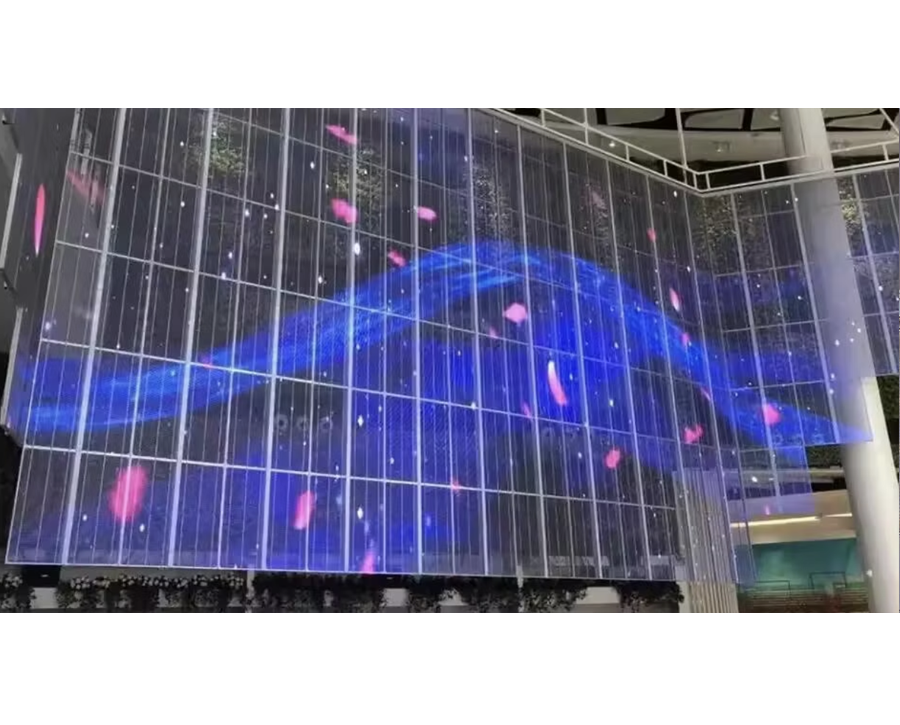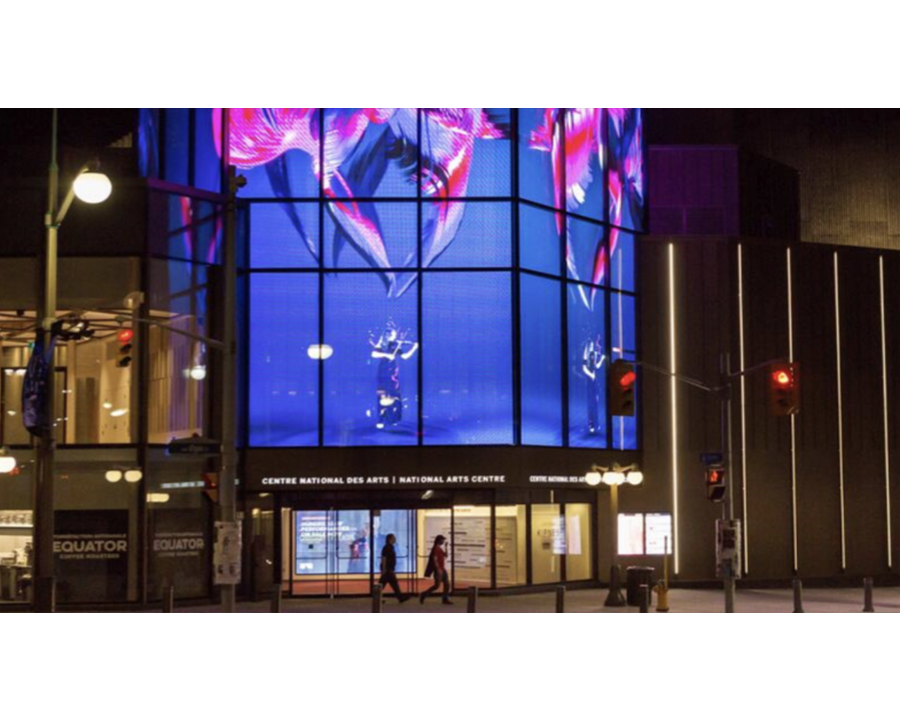
Clear led screen and transparent led glass are two of the biggest names in the digital world today. Often used interchangeably, both technologies perform similar functions, but they still couldn’t be more different. Let’s take a look at both technological advancements so you can tell them apart.
What is a Clear LED Screen?
A clear LED screen is an LED screen that incorporates see-through technology into its creation. Clear LED screens are transparent while using LED technology to produce images. The screen remains transparent even while producing images but still produces a visible picture.
LEDs are placed on a transparent material and produce images while the material still retains its transparent nature. Any transparent material can be used to make a clear LED screen, provided LEDs can fit on it.
Clear LED screens have been used in digital signage to advertise products in stores; it has also been used for commercial advertising. These screens have begun replacing billboards and jumbotrons in events thanks to their high resolution and customizable features.
What is Transparent LED Glass?
Transparent LED glass uses LED technology on glass to create a transparent effect, just like with clear LED screens. The main difference between both of them is that transparent LED glass only applies to glass surfaces. Essentially, transparent LED glass can be classified as a type of clear LED screen.
Transparent LED screens are being employed in modern architectural practices especially when dealing with smart houses. It fits in perfectly, creating walls all around a home, but still displays digital entertainment when needed.
Key Differences Between Clear LED Screen and Transparent LED Glass
Both types of LED screens are largely similar, but they are still so different. The differences become more important when you have specific needs relating to LED screens.
Transparency
Clear LED screens and transparent LED glass are both transparent materials but to different degrees. Transparent LED glass boasts a higher degree of transparency and is almost completely see-through. Clear LED screens still boast a level of transparency but plastic has less visibility than glass, making the resulting less transparent.
Brightness
Much like with transparency, Transparent LED glass produces brighter images. The glass allows colours from the LED to shine through with greater accuracy than with clear LED screens. The brightness settings on Transparent LED glass also have greater limits than with other materials like plastic, as seen in clear LED screens.
Installation Requirements
Both screens have similar installation requirements, with the only difference being the level of precision required for transparent LED glass. As plastic is a more flexible material than glass, there may be room for error as opposed to its glass counterpart. You need to select the location and secure all harnesses with perfection.
Image Quality
Transparent LED displays offer higher image quality and customization options over clear LED screens. In the right conditions, the image quality of a clear LED screen may match its glass counterpart, but it rarely surpasses it.
Durability
In this category, Clear LED screens are the safer bet as they are typically more durable than transparent LED glass. Depending on the material used, the screen can also be flexible, making it even more durable, especially when it pertains to handling.
Applications of Clear LED Screens
Clear LED screens are the more versatile option and are used in a wide range of industries. We’ll look at some of the most prominent and common applications of clear LED screens across various industries.
Retail Industry
Retail stores use clear LED screens for retail signage and advertising purposes. These screens fit in perfectly with the environment and don’t overshadow any merchandise in the store. Some stores also use them to provide in-store entertainment for customers while they shop.
Exhibitions
Exhibitions typically require the physical presence of the product in question, but not anymore. With clear LED screens, products get a digital representation and still have the same effect. With customization, the product can get a lifelike representation of the product to get a better feel for it.
Advertising
Clear LED screens are one of the biggest innovations in the world of digital advertising. Adverts are more interactive on LED screens, especially when equipped with touch-screen technology.
Applications of Transparent LED Glass
Transparent LED glass may not be as versatile as its counterpart, but that’s not to say it doesn’t have numerous applications.
Architectural Design
Architects are incorporating transparent LED glass into modern homes, especially smart homes. Glass homes are already breathtaking, but when you add in a transparent glass LED screen wall that seemingly blends in, it makes the experience even better.
Commercial Buildings
Much like with homes, commercial buildings are also incorporating more glass to let natural light in. You can get this effect and still have a screen in the office for entertainment and advertisement purposes.
High-End Installations
High-end installation requires the best available materials, and it doesn’t get better than a transparent LED display screen. By utilising tempered glass, the screen becomes more durable without losing its aesthetic appeal.
Factors to Consider When Choosing Between Clear LED Screens and Transparent LED Glass
If you’re unable to make a clear choice between clear LED screens and Transparent LED glass, there are a few things you can consider.
Project Goals
Each type of LED screen has its practical applications, and this can help you make a choice. Clear LED screens are more suited to public spaces, while transparent LED glass is the opposite.
Space
Clear LED screens are typically larger and are, therefore, better suited to large spaces. They are also easier to customize and create larger screens which can be used in stadiums and concerts.
Budget
Transparent LED glass is the more expensive choice, which can sometimes prove to be a deterrent. When you’re on a tight budget, you can find a clear LED to perform functions that would typically be suited to a transparent LED glass.
Desired Impact
What are you hoping to achieve with your LED screen? If aesthetics is the main goal, then a transparent LED glass is your best bet. If you prefer functionality and durability, then a clear LED screen is the better choice.
Pricing Comparison for Clear LED Screens and Transparent LED Glass
As with most other purchases in life, the choice of LED screens can ultimately come down to cost. There are different costs associated with LED screens at different stages, and it tends to be different between both screen types.
Installation
Installation cost is typically determined by the complexity involved. Installing transparent LED glass requires greater technicality and often involves a specialist. Most manufacturers offer free installation so the costs are typically negligible, but can go as high as $500.
Maintenance
Much like installation cost, maintenance is also dependent on the complexity. Maintenance can be carried out in person, so it typically doesn’t cost anything unless there is a fault that needs to be rectified.
Initial purchase prices
Both screen types fall in a similar price range, with transparent LED glass just edging out the race. Typically, the cost of LED screens is calculated by the square meter. Transparent LED panels can cost as much as $2,500 per square meter, with a clear LED screen costing around $2,000.
It may seem like clear LED screens are cheaper, but when you consider the fact that they are typically larger, then they can be more expensive. An outdoor unit like one used in concerts will prove to be among the most expensive purchases.
Installation and Maintenance Differences
Both screen types follow a similar installation and maintenance pattern. There are a few key differences which make all the differences and contribute to the lifespan of your screen.
Installation
The installation process of Clear LED screens differs from that of transparent LED glass in one key way: coupling. As clear LED screens can be linked to create a larger screen and improve viewing, linking becomes part of the installation process. You’ll need to couple the individual pieces together properly and calibrate them for the optimal result.
Installation is proactive and is determined by the environment where the screen will be installed. Indoor screens will need wall brackets, whereas outdoor screens will likely need poles fastened to the ground or even hanging brackets. You need to consider the correct installation method properly as it directly affects the lifespan of your screen.
Maintenance
Maintenance practices are different in both screens when it comes to cleaning. Glass screens require more delicate cleaning materials, or you risk damaging the screen. You’ll also need to inspect the joints and wall brackets where necessary. With proper maintenance, your screen can last a long time, allowing you to get the best value for your money.
Which Technology Is Best for Your Needs in 2025?
Both clear LED screens and transparent LED glass have their uses and benefits. Your particular needs will determine which technology is best for you. Indoor home and commercial use are better suited for transparent LED glass, especially when aesthetic value is considered.
Clear LED screens, on the other hand, are better suited to outdoor use like advertising and large-scale events. If you’re looking to host a concert or looking for a screen for stadium use, then clear LED is the perfect option.
Conclusion
Transparent LED glass and Clear LED screen are top-of-the-line innovations in the digital world. With similar functions and interchangeable uses, it’s important to be able to differentiate both, especially when you have specific needs.
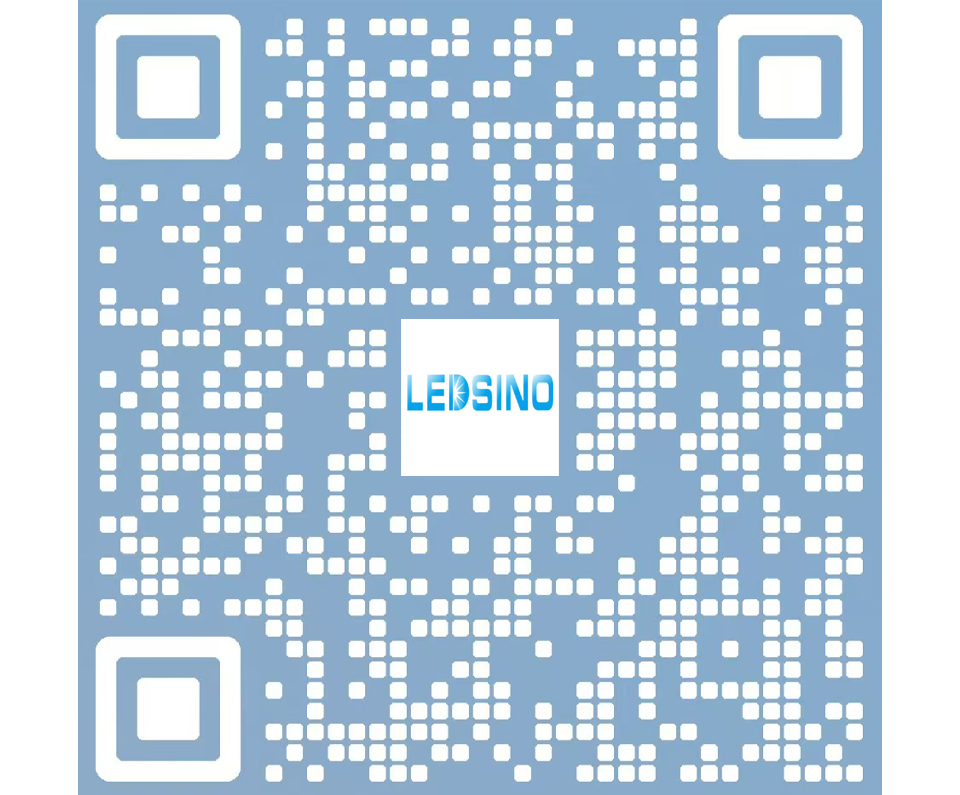
Enter the digital world with our advanced display technologies.

